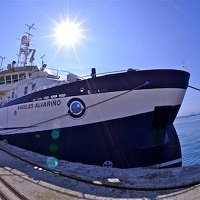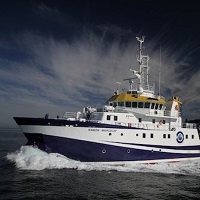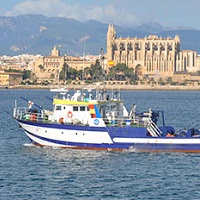Keyword
Dissolved inorganic nitrogen concentration in the water column
119 record(s)
Type of resources
Categories
Topics
INSPIRE themes
Keywords
Contact for the resource
Provided by
Years
Formats
Status
-

Main targets: · ESTOC Observatory service - FixO3 · ESTOC time-series - Autonm sampling
-

Main targets: · ESTOC Observatory service - FixO3. · ESTOC time-series - Winter sampling. · Coastal observatory sampling. · Time Serie for environmental control of the PLOCAN test bed.
-

Main targets: · ESTOC Observatory service - EMSO-ICOS. · ESTOC time-series - Winter sampling. · Coastal observatory sampling. · Time Serie for environmental control of the PLOCAN test bed.
-

Main targets: · ESTOC Observatory service - FixO3. · ESTOC time-series - Winter sampling. · Coastal observatory sampling. · Time Serie for environmental control of the PLOCAN test bed.
-

The main objective is to characterize the water masses in the region from the surface to 5000m. This transect is part of a serie of hidrographic cruises that since 2003 are developed as part of the core program of the IEO.
-

Main targets: · ESTOC Observatory service - EMSO-ICOS. · ESTOC time-series - Winter sampling. · Coastal observatory sampling. · Time Serie for environmental control of the PLOCAN test bed.
-

Main targets: · ESTOC Observatory service - FixO3. · ESTOC time-series - Winter sampling. · Coastal observatory sampling. · Time Serie for environmental control of the PLOCAN test bed.
-

Long term time series monitoring in 3 standard sections: Santander, Gijón and Cudillero to study the hydrographical and biological variability and tendencies in the water masses, the timing of any pronounced shift observed on them as well as the search of their causes and their biogeochemical consequences.
-

Determinación de las variaciones diarias en la dieta de larvas de sardina
-

EVALUACION DE LA SENSIBILIDAD DEL BUCLE MICROBIANO AL IMPACTO DE MULTIPLES FACTORES EN ECOSISTEMAS ACUATICOS MEDITERRANEOS OBJETIVOS: De acuerdo con los planteados en el proyecto Microsens, los objetivos de la campaña serán los siguientes: 1. Cuantificar la biodiversidad de la comunidad planctónica, mediante la determinación de: 1.1 La abundancia y biomasa de bacterias y picoplancton autótrofo 1.2. La composición taxonómica, abundancia y biomasa de fitoplancton 1.3. La composición taxonómica, abundancia y biomasa de nanoflagelados y ciliados. 1.4. La composición taxonómica, abundancia y biomasa de micro y macrozooplancton. 2. Cuantificar el flujo de carbono entre los distintos grupos funcionales que constituyen el bucle microbiano y la cadena de consumidores, para lo cual se llevarán a cabo medidas de la producción primaria y respiración en diferentes fracciones del plancton 3. Determinar las respuestas funcionales y metabólicas de la comunidad planctónica ante cambios en el espectro de radiación solar y en la concentración de nutrientes mediante experimentos de micro-cosmos realizados a bordo.
 Catálogo de datos del IEO
Catálogo de datos del IEO